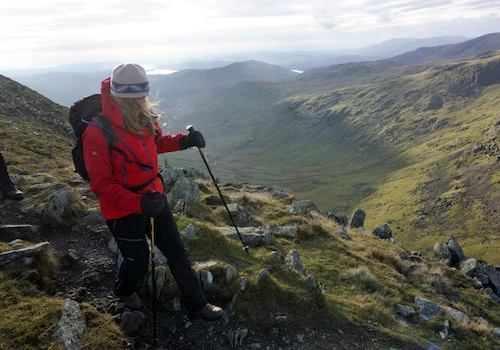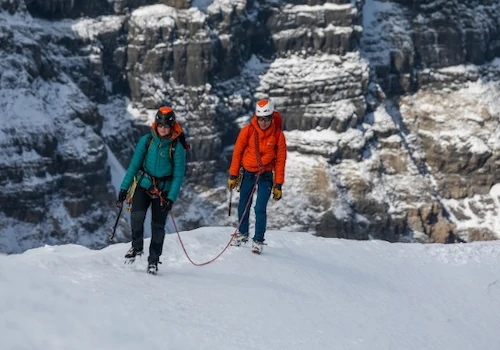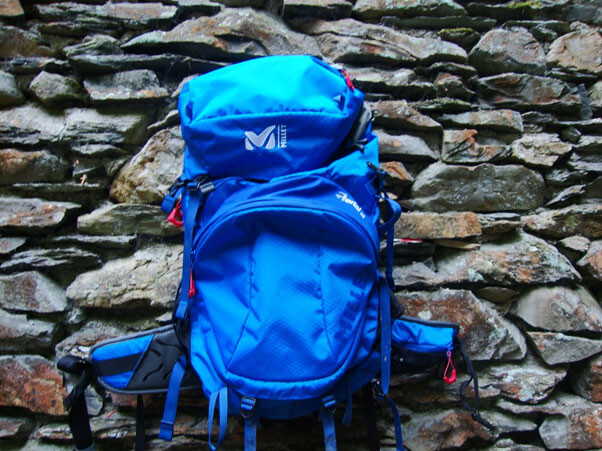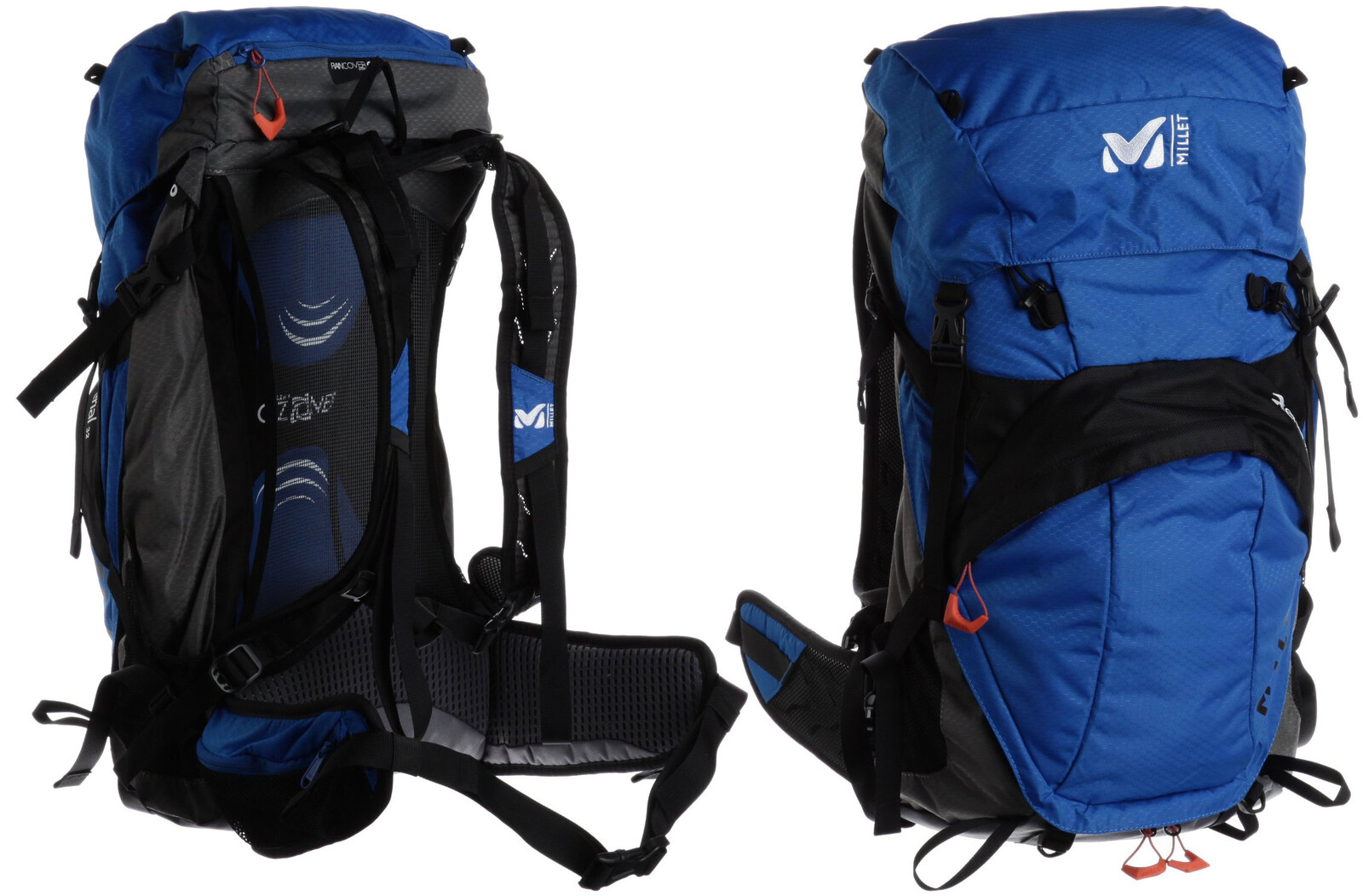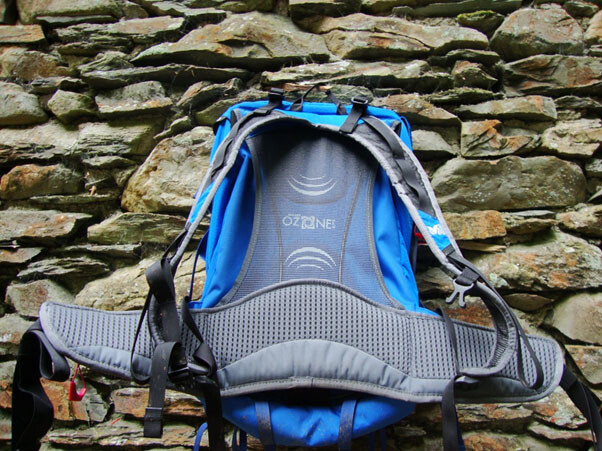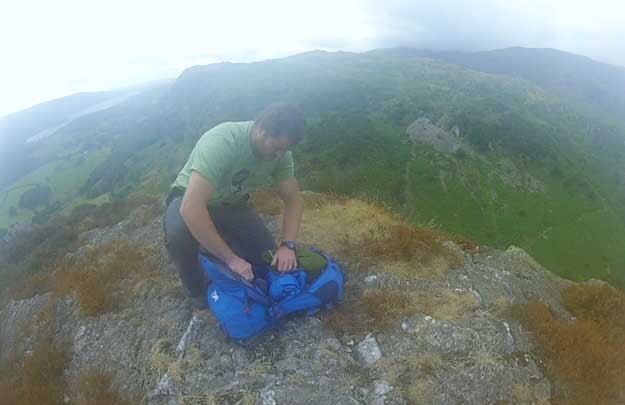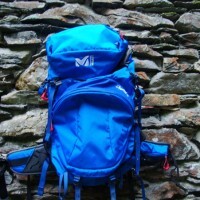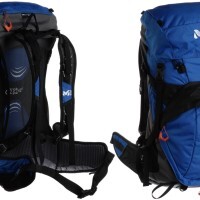
- Expeditions
By Region
By Month
By Grade
By Height
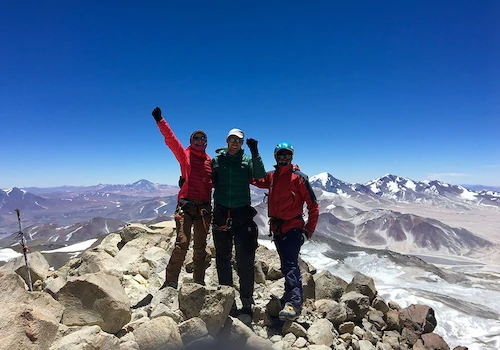
- Treks
- UK & Alpine
- Schools
- Hire
- News
- Shop
Staff Review - Millet Aerial 32 Review
2014-03-05: I have now been field-testing the Millet Aerial 32 rucksack now for nearly a year. Whilst I have not used it for anything alpine, or “sport walking” I have used it for some scrambling in the Lake District, mountain biking, many many trips to various climbing walls around the UK and a holiday in Australia where it was my go to rucksack for everything. I feel that I can now give a good assessment of the pros and cons of the Aerial 32 rucksack.
So here’s a little re-cap on the main features of the Aerial 32 rucksack from my first review.
- Alpine-hiking and sport-walking backpack with stretched-back concept offering good ventilation
- Ventilated harness-type shoulder straps and hand rest
- Ozone stretched-back system for ultra airflow
- Ventilated shoulders and belt
- Suitcase type front access zip
- Load Directed Construction
- 2 zipped pockets and key ring and gear-holding straps, 1 zipped front pocket, Suitcase-type front access zip, top lid with storm collar
- Side net pockets
- Ventilated hip belt and 1 zipped pocket
So let’s get right down to business. In my opinion, this is a well-designed, well thought out and stylish rucksack that will do the job it is designed to very well but it does have some drawbacks.
Let’s go through it’s good points first. The pack is very stable and distributes its load extremely well due to Millet’s Load Directed Construction. I would say I have an average length back and the Aerial 32 fits very well. This is the visible “X” construction across the front of the pack. It allows the load to be distributed to the hip and shoulder straps. In practice, I found this to be very effective, particularly in shifting heavy loads to the hips where it can be more comfortably supported.
I also found the materials used to construct the comfy and durable. The shoulder straps never caused any rubbing or discomfort even after prolonged use with a full load. The hip belt is also very well padded adding to the comfort of wearing the pack. The “Ozone stretched back system” that Millet intends to provide “ultra airflow”. Even in very hot and humid conditions I found that the pack had good ventilation. As would be expected, the only areas that overheated were the hip and shoulder straps. Millet has attempted to minimise this by using lightweight and vented fabrics which seems to work.
I like the layout of the pockets in this pack. It is quite traditional, with a lid pocket, large front pocket., main pocket and several mesh side pockets. All the zips appear to be sturdy and have large tags to allow opening even with large gloves on. With so many zips, there is always the worry that if they break it will ruin the pack. However, I have not encountered any problems with them. This also goes for the robust plastic buckles. The main pocket has a sleeve for a water bladder and is compatible with all the main designs, which is found very useful, as I own a number of different types.
Now for some of the drawbacks I have found with this pack. I have found all the adjustable webbing straps to be way too long. I probably have bigger than average shoulders and waist but the amount of adjustment available in the shoulder and hip belts is fairly excessive, even if I was wearing multiple large layers. This means that the excess has to be secured in some way, (you could fold and tape them) or use the elastic holders. This is fine, but I did find that the elastic holders stretched and stopped holding the excess straps, which in windy conditions painfully whipped around or just got in the way.
There 4 compression straps on the Aerial 32 which allows loads to be secured inside the pack to stop them rattling around. This is good. However, if trying to use the “suitcase” style opening for the main pocket, without undoing all 4 buckles, it is very difficult to get in. Personally, I found this time consuming and a little annoying, so I rarely used this feature.
With the lightweight materials used, I did find the pack quite heavy, especially when compared to my Marmot Compressor rucksack (which is very similar in size and purpose). This may be due to the frame that provides the Ozone back system. This is where a trade-off on pack design comes in. The fame allows good ventilation and exceptional stability, but it does cut down on space inside the pack and also adds weight. My personal preference is to avoid a frame type system as I generally find them comfier and I can also stuff more things inside the rucksack. I would stress though, that this is my own opinion, and that if you like a pack with a well-designed frame system, then the Aerial 32 would be a good choice.
In conclusion then, The Aerial 32 is a well-designed and constructed rucksack. It looks good and will perform any of the tasks it is designed for very capably. It does however, have a few drawbacks. I have learned to live with these minor faults and still use the Aerial 32 a lot, and would still pick it as my pack for day’s scrambling or walking due to its stability and ventilation system.
2013-07-03: I have to be honest, I like a good rucksack! I’ve got rucksacks for everything from a small 10 mile ride on the bike to a full day out climbing and weekends away or visiting friends. What I don’t have however, is a lightweight rucksack for those days out running or walking in the fells or for when I don’t need 50 litres of storage and all the extra bits. That’s where the Millet Aerial 32 rucksack slots seamlessly into my collection, or so I’m hoping. Designed for “alpine hiking and sport walking” (I’m not entirely sure what “sport walking” is but it sounds good!) the rucksack offers a lightweight and well-designed product. As you would expect from a Millet product, it has loads of great features, is constructed out of the best materials and appears to have great craftsmanship. That is my first impression on taking delivery.
So a little more on what this rucksack offers then. Importantly, for when I’m “sport walking” Millet has included its “new Ozone stretched-back system for ultra airflow” this promises a decent level of ventilation which, when included with ventilated shoulder straps and waist belt should help me keep cool. I’m not usually a fan of rigid back systems as I tend to find that they restrict the amount you can stuff inside and I have experienced rubbing and discomfort on my lower back with other packs. I usually avoid them, but this may make me think about what I’m packing which can’t be a bad thing to cut down on weight. The large amount of padding on the lower back and hip belt should minimise any rubbing and shows Millet have thought about this problem in the design. I’m going to keep an open mind and hopefully this rucksack will change my opinion of rigid back systems.
Another key feature is Millet’s Load Directed Construction which allows weight to be directed to where it is best carried on the hips and shoulders. The visible “X” design on the front is constructed a couple of fabrics (Nylon 420/D Velocity and polyester P600/D PES) which is attached to the compression straps which allows the weight to be compressed up or down to where it will be most comfortably carried. Don’t worry about the technical abbreviations, all that needs to be taken away from this is that they very robust and durable fabrics. The bottom of the pack also angles upwards to help distribute the weight at the hips rather than pulling down. The remainder of the bag is made from Nylon 210/D Ripstop honeycomb which gives a nice amount of texture and detailing close up.
The Aerial 32 has a rear opening top lid with a storm collar and a clip inside for the included rain cover which is bright red, so I’m unlikely to be missed when I’m wearing it. The bag can be packed in the traditional top loading style or through the front pocket “suitcase style”. I am reserving judgement on this method of getting into the pack. As long as the zip is durable and robust then this will be brilliant, however, should the zip break, the pack’s performance will diminish greatly. There are also 2 zipped pockets, a large one on the front and a smaller inside the top lid with a key ring/gear holding strap and a small zipped pocket on the waist belt. Other features include, pole and ice-axe holders, full compatibility with all hydration systems, side net pockets and side compression straps and pack-bottom straps.
The number of features on this pack means that it comes in about average for weight at 1200g. This compares with other rucksacks of a similar type like the Berghaus Caldera 35 (1290g) and Deuter ACT Trail 32 (1350g).


